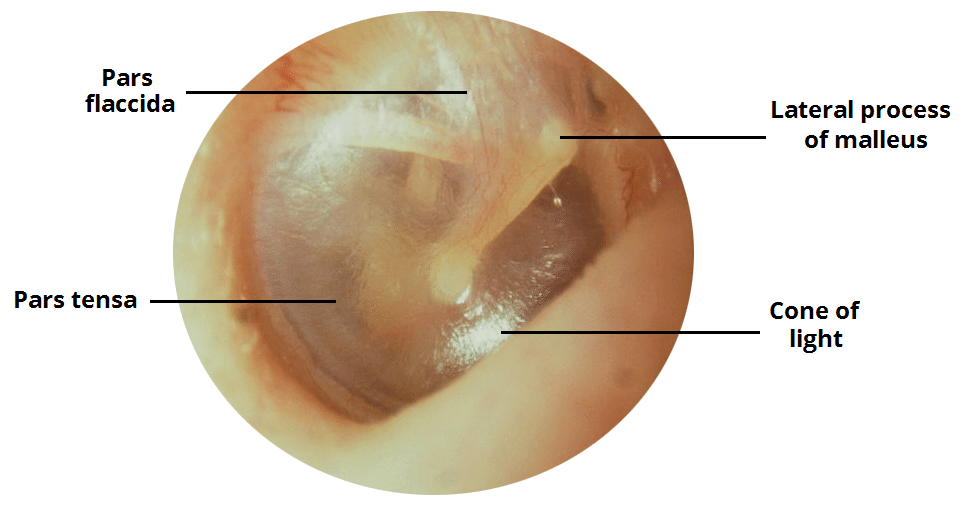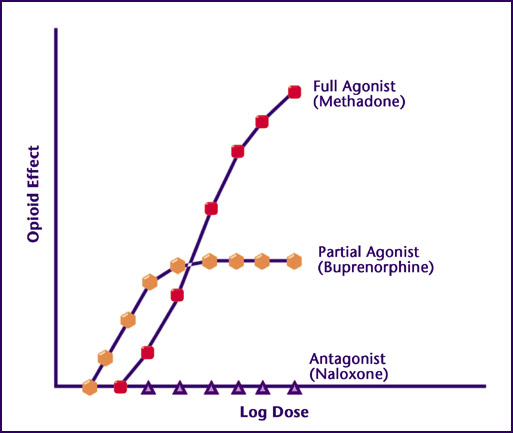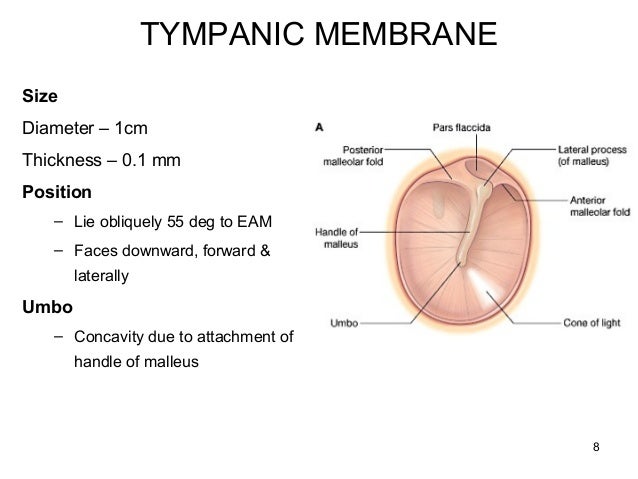Definition by Wonder Me!:
Partial agonists actually can block the effects of full agonists when dispersed together.
Clinical examples:
Nubain = partial agonist
Oxycodone = full agonist
=> Too much nubain => less receptors for oxycodone to bind => oxycodone can exert its effects that it usually can in the absence of nubain => reduced pain relief (1)
References:
(1) https://books.google.com/books?id=AniUCgAAQBAJ&pg=PA327&dq=oxycodone+nubain+agonist&hl=en&sa=X&ved=0ahUKEwjEhqO56fHLAhWEwYMKHUBiAW8Q6AEIHDAA#v=onepage&q=oxycodone%20nubain%20agonist&f=false
Saturday, April 2, 2016
full agonists vs partial agonists
Definition by Wonder Me!:
Full agonists activate maximum effects when binding to receptors.
Partial agonists activate less than maximum effects when binding to receptors
Clinical example:
Methadone, like heroin, is the full agonist for opioid effects
Buprenorphine as the partial agonist for opioid effects
Why it works?:
Full agonists activate maximum effects when binding to receptors.
Partial agonists activate less than maximum effects when binding to receptors
Clinical example:
Methadone, like heroin, is the full agonist for opioid effects
Buprenorphine as the partial agonist for opioid effects
Why it works?:
"For people who are not addicted to or dependent on opioids, the effects of partial (buprenorphine) and full (methadone) agonists are indistinguishable. However, at a certain point, the increasing effects of partial agonists reach maximum levels. For this reason, people who are dependent on high doses of opioids are better suited to treatment with a full agonist, such as methadone." (1)
References:
antagonists
Definition by Wonder Me!:
Antagonists bind to receptors blocking it from binding with agonists to produce any effects.
Antagonists bind to receptors blocking it from binding with agonists to produce any effects.
Pharmacologic antagonist
Definition by Wonder Me!:
Pharmacologic antagonist binds the receptors. It doesn't make the receptor do anything. It just blocks the receptor from doing anything the receptor is supposed to be activated to do because the pharmacologic antagonists block the receptors preventing other agonists to bind to the receptors to activate the receptors to do anything.
Clinical example:
Propranolol (nonselective β1 and β2)
Why it works?
Citations:
(1) http://www.mayoclinic.org/diseases-conditions/high-blood-pressure/in-depth/beta-blockers/art-20044522
Pharmacologic antagonist binds the receptors. It doesn't make the receptor do anything. It just blocks the receptor from doing anything the receptor is supposed to be activated to do because the pharmacologic antagonists block the receptors preventing other agonists to bind to the receptors to activate the receptors to do anything.
Clinical example:
Propranolol (nonselective β1 and β2)
Why it works?
"Beta blockers work by blocking the effects of the hormone epinephrine, also known as adrenaline. When you take beta blockers, the heart beats more slowly and with less force, thereby reducing blood pressure. Beta blockers also help blood vessels open up to improve blood flow." (1)
Citations:
(1) http://www.mayoclinic.org/diseases-conditions/high-blood-pressure/in-depth/beta-blockers/art-20044522
competitive antagonists
Definition by Wonder Me!:
Competitive antagonists have to compete with other agonists for receptors. And, once it already binds to the receptors, it still can be replaced by agonists if the agonists concentration is high enough to displace competitive antagonists.
Clinical example:
Naloxone(1)
Why it works?:
Naloxone is an infusion because it has short half-life. Thus, at first, its concentration exceeds opioid concentration. But then, due to its short half-life, its concentration becomes less than that of opioid. This makes pt becomes unconscious again. Therefore, constant naloxone drip is needed. (2)
MCQ resources:
Citations:
irreversible antagonist
Definition by Wonder Me!:
Irreversible antagonists bind permanently to receptors. Therefore, even if you put a bunch of agonists to bind to these receptors, these irreversible antagonists won't leave these receptors for the agonists to bind to these receptors.
Clinical example:
- Phenoxybenzamine (at alpha1-adrenoreceptors meaning alpha-1-antagonist!) (1)
Why it works? :
- Phenoxybenzamine permanently binds to alpha adreno-receptors. Thus, it disables alpha adreno-receptors. Therefore, it helps in Reynauld's disease & HTN caused by phaeochromocytoma (2).
- In Reynauld's disease, "the local fault may involve the alpha 2-adrenergic receptors, which are most important in reflex sympathetic vasoconstriction." (3)
- "A pheochromocytoma is a rare, catecholamine-secreting tumor that may precipitate life-threatening hypertension." (4) Circulating catecholamines include epinephrine and norepinephrine. These catecholamines cause "vasoconstriction in most systemic arteries and veins (postjunctional α 1 and α 2 adrenoceptors)" (5)
Citations:
(1) https://books.google.com/books?id=ThlamNsTDnMC&pg=PA104&dq=%22irreversible+antagonist%22+examples&hl=en&sa=X&ved=0ahUKEwj__YPH1PHLAhXEtIMKHVVlBNwQ6AEIOjAF#v=onepage&q=%22irreversible%20antagonist%22%20examples&f=false
(2) https://books.google.com/books?id=F4-IdTewurIC&pg=PA280&lpg=PA280&dq=%22irreversible+antagonist%22+phenoxybenzamine&source=bl&ots=mRnuVNefvI&sig=dL42U7HMA5HCMY7jA7M4hOP4NfI&hl=en&sa=X&ved=0ahUKEwjUp_im1vHLAhWMuoMKHVwuArcQ6AEIUzAG#v=onepage&q=%22irreversible%20antagonist%22%20phenoxybenzamine&f=false
(3) http://www.ncbi.nlm.nih.gov/pubmed/2022404
(4) http://emedicine.medscape.com/article/124059-overview
(5) http://www.cvphysiology.com/Blood%20Pressure/BP018.htm
Irreversible antagonists bind permanently to receptors. Therefore, even if you put a bunch of agonists to bind to these receptors, these irreversible antagonists won't leave these receptors for the agonists to bind to these receptors.
Clinical example:
- Phenoxybenzamine (at alpha1-adrenoreceptors meaning alpha-1-antagonist!) (1)
Why it works? :
- Phenoxybenzamine permanently binds to alpha adreno-receptors. Thus, it disables alpha adreno-receptors. Therefore, it helps in Reynauld's disease & HTN caused by phaeochromocytoma (2).
- In Reynauld's disease, "the local fault may involve the alpha 2-adrenergic receptors, which are most important in reflex sympathetic vasoconstriction." (3)
- "A pheochromocytoma is a rare, catecholamine-secreting tumor that may precipitate life-threatening hypertension." (4) Circulating catecholamines include epinephrine and norepinephrine. These catecholamines cause "vasoconstriction in most systemic arteries and veins (postjunctional α 1 and α 2 adrenoceptors)" (5)
Citations:
(1) https://books.google.com/books?id=ThlamNsTDnMC&pg=PA104&dq=%22irreversible+antagonist%22+examples&hl=en&sa=X&ved=0ahUKEwj__YPH1PHLAhXEtIMKHVVlBNwQ6AEIOjAF#v=onepage&q=%22irreversible%20antagonist%22%20examples&f=false
(2) https://books.google.com/books?id=F4-IdTewurIC&pg=PA280&lpg=PA280&dq=%22irreversible+antagonist%22+phenoxybenzamine&source=bl&ots=mRnuVNefvI&sig=dL42U7HMA5HCMY7jA7M4hOP4NfI&hl=en&sa=X&ved=0ahUKEwjUp_im1vHLAhWMuoMKHVwuArcQ6AEIUzAG#v=onepage&q=%22irreversible%20antagonist%22%20phenoxybenzamine&f=false
(3) http://www.ncbi.nlm.nih.gov/pubmed/2022404
(4) http://emedicine.medscape.com/article/124059-overview
(5) http://www.cvphysiology.com/Blood%20Pressure/BP018.htm
Physiologic antagonist
Definition (by Wonder Me!):
Physiologic antagonist is an antagonist so-called because it doesn't exert its antagonistic effects directly on the receptor that produces the effects. Physiologic antagonists bind to a receptor and makes that receptor creates an effect that is opposite to the other receptor.
Clinical implications: Antidotes!
Clinical examples:
- Epinephrine for antihistamine effects:
- Glucagon for betablockers overdose:
- Carbachol & papaverine on smooth muscles (3)
- Noradrenaline & histamines on allergic conditions (3)
Citation:
(1) https://en.wikipedia.org/wiki/Physiological_agonism_and_antagonism
(2) http://www.medscape.com/viewarticle/430202_6
(3) https://books.google.com/books?id=X3cCZQCrrjcC&pg=PA43&lpg=PA43&dq=%22Physiologic+antagonist%22+examples&source=bl&ots=SxQy6ELxCI&sig=fuqUEwMnO93e_fwrCwTgoRUwPOo&hl=en&sa=X&ved=0ahUKEwj4hc-y0fHLAhXqyIMKHeV0BiEQ6AEIOjAF#v=onepage&q=%22Physiologic%20antagonist%22%20examples&f=false
Physiologic antagonist is an antagonist so-called because it doesn't exert its antagonistic effects directly on the receptor that produces the effects. Physiologic antagonists bind to a receptor and makes that receptor creates an effect that is opposite to the other receptor.
Clinical implications: Antidotes!
Clinical examples:
- Epinephrine for antihistamine effects:
"There are several substances that have antihistaminergic action despite not being ligands for the histamine receptor. For instance, epinephrine raises arterial pressure through vasoconstriction mediated by A1-adrenergic receptor activation, in contrast to histamine, which lowers arterial pressure. Thus, despite not being true antihistamines because they do not bind to and block the histamine receptor, epinephrine and other such substances are physiological antagonists to histamine." (1)
- Glucagon for betablockers overdose:
"Glucagon has become an accepted antidote to beta-blocker poisoning because it stimulates cAMP synthesis independent of the beta-adrenergic receptor.[41] Glucagon has shown positive inotropic and chronotropic effects despite beta-receptor blockade in numerous animal models and in humans." (2)- Adrenaline & insulin on blood sugar (3)
- Carbachol & papaverine on smooth muscles (3)
- Noradrenaline & histamines on allergic conditions (3)
Citation:
(1) https://en.wikipedia.org/wiki/Physiological_agonism_and_antagonism
(2) http://www.medscape.com/viewarticle/430202_6
(3) https://books.google.com/books?id=X3cCZQCrrjcC&pg=PA43&lpg=PA43&dq=%22Physiologic+antagonist%22+examples&source=bl&ots=SxQy6ELxCI&sig=fuqUEwMnO93e_fwrCwTgoRUwPOo&hl=en&sa=X&ved=0ahUKEwj4hc-y0fHLAhXqyIMKHeV0BiEQ6AEIOjAF#v=onepage&q=%22Physiologic%20antagonist%22%20examples&f=false
acromegaly due to pituitary tumor
**All cases are fictitious. No real patient encounters. Any resemblance to real persons, living or dead, is purely coincidental.**
Case*: Oh my, his eye brow bone is huge!
Thinking: What could be the cause?
Case*: Oh my, his eye brow bone is huge!
Thinking: What could be the cause?
parkinsonism
Facial masking: blank expressions, immobilized, staring
Shuffling gait: walk by dragging one's feet along or without lifting them fully from the ground. Turning is en bloc like a statue.
Pill-rolling tremors: "the motion used to roll a marble between the thumb and forefinger"
"The tremor often spreads to the other side of the body as the disease progresses, but will remain most obvious on the side of the body where it first started.A few more points on tremors include:
- usually occur at rest, may occur at any time
- may become severe enough to interfere with activities
- may be worse when tired, excited, or stressed
- finger-thumb rubbing (*pill-rolling tremor) may be present
*NOTE: ("Pill-rolling" is seen especially in the hands; this is fairly unique to Parkinson's disease. The term refers to the motion that a pharmacist uses to align a handful of pills before placing them in a bottle or, possibly, the motion used to roll a marble between the thumb and forefinger. Eventually the tremor becomes more generalized.)"
ruptured tympanic membrane
**All cases are fictitious. No real patient encounters. Any resemblance to real persons, living or dead, is purely coincidental.**
Case*: hmm, I don't see the Tympanic membrane. Did I not push my otoscope far in enough?
Solution:
NORMAL TYMPANIC MEMBRANE:
Know what a normal tympanic membrane look like:
- pinkish gray (Wonder me! usually sees normal tympanic membrane more gray thank pinkish)
- small blood vessels along the malleus is normal too
Ruptured tympanic membrane:
Helpful resource: http://www.ghorayeb.com/Malleus.html
Case*: hmm, I don't see the Tympanic membrane. Did I not push my otoscope far in enough?
Solution:
NORMAL TYMPANIC MEMBRANE:
Know what a normal tympanic membrane look like:
- pinkish gray (Wonder me! usually sees normal tympanic membrane more gray thank pinkish)
- small blood vessels along the malleus is normal too
 |
| Note: malleus, pars flaccida, pars tensa, & cone of light |
 | |||
| Malleus = Hammer |
Ruptured tympanic membrane:
Helpful resource: http://www.ghorayeb.com/Malleus.html
Friday, April 1, 2016
diet mnemonics
CARBOHYDRATES (My Favorite Game is Volleyball)
Milk, Fruits, Grains, Veggies
CHOLESTEROL (A Sedentary Lifestyle Ends)
animal products, shellfish, liver and organ meat, egg yolks
SATURATED FATS (LasVegas Bars BeatsHollywood)
luncheon meats, beef, butter, hard yellow cheeses
POLYUNSATURATED FATS - plant oils (corn, safflower, sunflower)
PROTEINS (Proteins BuilD Fearless Men)
poultry, bread and cereals, dairy products, fish, meats (w/c has complete proteins/contains all essential amino acids)
FOLIC ACID (FOOL) fish, organ meats, oranges, leafy green veggies
NIACIN, THIAMINE (B1), RIBOFLAVIN (B2) - (Gain Money & Lives Forever)
grains, meats (pork), legumes, fish
PYRIDOXINE (B6) - (YMCP) * remember, isoniazid(INH) increase B6 intake; levodopa decrease B6 intake
yeast, meat (fish), corn, poultry
COBALAMIN (B12) - (ML)
meat, liver + citrus fruits, dried beans, brewer's yeast
VITAMIN C - (CCTB) citrus fruits (strawberries, oranges, kiwi), cabbage, tomato, broccoli
VITAMIN A - (Eye Must Feel Very Lively)
egg yolk, milk (whole), fruits, veggies (lively - green, orange, yellow), liver
VITAMIN D- (Cute MilkFish Oil)
cereals, milk (fortified), fish, oils
VITAMIN E - antioxidants (ANTOV)
apple, avocado, apricot
nuts
tomato, potato
oils, vegetable
veggies, green and leafy
VITAMIN K (greens) green leafy veggies, cauliflower, broccoli, cabbage, lettuce, spinach, brussels
POTASSIUM (K+) *Remember Vitamin K-clotting factor; K/Potassium-electrolyte!!
think of rainbow colorsRed - strawberry, tomato (but not apple!!)
Orange - oranges, cantaloupe, carrots, apricot
Yellow - banana, potato
Green - avocado, kiwi
Blue from blue sea - fish
I/V Indigo/Violet - raisins
+ salt substitutes
SODIUM (Na) Think of: Fast foods/processed, saltwater fish, canned foods
CALCIUM (Ca) Think of: Dairy and Creamy (cheese, collar greens, milk, rhubarb, tofu, yogurt, etc
MAGNESIUM (Mg) - (MAGNET)
milk, meat
avocado, potato
greens (spinach, broccoli)
nuts, peas
etc. (raisins, yogurt)
tuna, canned & white
PHOSPHOROUS (PO4) - (FONG)
fish
organ meats - pork, beef, chicken
nuts
grains (whole)
IRON (Fe) think of: Iron is found in the blood, you inject meds w/ a syringe, and a syringe has a BEVELed needle
Breads & cereals
Veggies (dark green)
Egg yolk
Lliver meat
*Orange juice increases Fe absorption via PO
TYRAMINE-RICH FOODS - (TYRACS) *CI to MAOi's
Tuna fish
Yeast, yogurt
ROH - chemical symbols for alcohol or if you like Rum
Avocado
Cheese, swiss; caffeine
Soy sauce, sausages, sour cream
Citation:
http://allnurses.com/nclex-discussion-forum/some-of-my-686000.html
GTPAL
GTPAL
G = gravida - pregnancy
P = Parity (pregnancy delivered @ >20weeks)meaning labors (Para is the number of times the uterus is emptied) broken down into the following:
T = term deliveries (#) (the number of term pregnancies – twins count as 1 pregnancy! @ > 37 weeks)
P = preterm deliveries (@ <37weeks)
A = abortions or miscarriages (spontaneous + therapeutic/elective)
L = live births
Ex: G6, P3023 means 6 pregnancies, 3 term deliveries, 0 preterm deliveries, 2 abortions/miscarriages (including early term losses), 3 living children
Ex: "a woman who has 2 living children born as preterm twins in her first pregnancy would be designated as: TPAL 0-1-0-2 - 0 term births, 1 delivery prior to 37 weeks gestation (preterm), 0 pregnancies ending in spontaneous or induced abortions, and 2 living children" (3)
Confusing terms (2):
Gravida
A woman who currently is pregnant or has been in the past, irrespective of the pregnancy outcome.
Gravidity: The number of pregnancies, current and past, regardless of the pregnancy outcome.
ISSUES
• What counts as evidence of pregnancy?
Do chemical pregnancies count?
Do physicians have to have evidence of pregnancy?
RATIONALE
• If a woman says she was pregnant and there was any evidence, should count.
• Includes chemical pregnancies
Parity
The number of pregnancies delivered at 20 weeks, 0 days or beyond, regardless of the number of fetuses, alive or dead.
ISSUES
• Fetal death certificate versus certificate of live birth
• Address confusion over multiple gestation.
• Question of viability at 20 weeks
• Include abortions after 20 weeks
RATIONALE
• Would, by definition, include abortions
• 20 weeks was decided by fetal death certificate; do not want to debate viability
~Wonder Me!
Citations:
(1) http://www.acog.org/About-ACOG/News-Room/News-Releases/2013/Ob-Gyns-Redefine-Meaning-of-Term-Pregnancy
(2) http://www.acog.org/About_ACOG/ACOG_Departments/Patient_Safety_and_Quality_Improvement/~/media/Departments/Patient%20Safety%20and%20Quality%20Improvement/201213IssuesandRationale-HistoricalDiagnoses.pdf
(3) http://sinoemedicalassociation.org/AP2/OBGYNTERMINOLOGYDEFINITION.pdf
https://manual.jointcommission.org/releases/TJC2014A/rsrc/Manual/TableOfContentsTJC/PC_2014A.pdf
https://www.acog.org/-/media/Departments/Patient-Safety-and-Quality-Improvement/2014reVITALizeObstetricDataDefinitionsV10.pdf
G = gravida - pregnancy
P = Parity (pregnancy delivered @ >20weeks)meaning labors (Para is the number of times the uterus is emptied) broken down into the following:
T = term deliveries (#) (the number of term pregnancies – twins count as 1 pregnancy! @ > 37 weeks)
P = preterm deliveries (@ <37weeks)
A = abortions or miscarriages (spontaneous + therapeutic/elective)
L = live births
Ex: G6, P3023 means 6 pregnancies, 3 term deliveries, 0 preterm deliveries, 2 abortions/miscarriages (including early term losses), 3 living children
Ex: "a woman who has 2 living children born as preterm twins in her first pregnancy would be designated as: TPAL 0-1-0-2 - 0 term births, 1 delivery prior to 37 weeks gestation (preterm), 0 pregnancies ending in spontaneous or induced abortions, and 2 living children" (3)
New ACOG guidelines for term pregnancies (1):
The following represent the four new definitions of ‘term’ deliveries:
- Early Term: Between 37 weeks 0 days and 38 weeks 6 days
- Full Term: Between 39 weeks 0 days and 40 weeks 6 days
- Late Term: Between 41 weeks 0 days and 41 weeks 6 days
- Postterm: Between 42 weeks 0 days and beyond
Confusing terms (2):
Gravida
A woman who currently is pregnant or has been in the past, irrespective of the pregnancy outcome.
Gravidity: The number of pregnancies, current and past, regardless of the pregnancy outcome.
ISSUES
• What counts as evidence of pregnancy?
Do chemical pregnancies count?
Do physicians have to have evidence of pregnancy?
RATIONALE
• If a woman says she was pregnant and there was any evidence, should count.
• Includes chemical pregnancies
Parity
The number of pregnancies delivered at 20 weeks, 0 days or beyond, regardless of the number of fetuses, alive or dead.
ISSUES
• Fetal death certificate versus certificate of live birth
• Address confusion over multiple gestation.
• Question of viability at 20 weeks
• Include abortions after 20 weeks
RATIONALE
• Would, by definition, include abortions
• 20 weeks was decided by fetal death certificate; do not want to debate viability
~Wonder Me!
Citations:
(1) http://www.acog.org/About-ACOG/News-Room/News-Releases/2013/Ob-Gyns-Redefine-Meaning-of-Term-Pregnancy
(2) http://www.acog.org/About_ACOG/ACOG_Departments/Patient_Safety_and_Quality_Improvement/~/media/Departments/Patient%20Safety%20and%20Quality%20Improvement/201213IssuesandRationale-HistoricalDiagnoses.pdf
(3) http://sinoemedicalassociation.org/AP2/OBGYNTERMINOLOGYDEFINITION.pdf
https://manual.jointcommission.org/releases/TJC2014A/rsrc/Manual/TableOfContentsTJC/PC_2014A.pdf
Pharm basics
I - PK (Pharmaco-Kinetics):
1. ADME: Absorption, Distribution, Metabolism, Excretion
2. Absorption mechanism: pinocytosis, passive diffusion, active transport, facilitated diffusion
3. Terms:
Bioavailability = %[drug]systemic circulation
Bioequivalence = same AUC (Cmax, Tmax)
First-pass effect = oral then after liver
Volume of distribution = dose/[plasma concentration]
Clearance = t(totally eliminated)
Area under the Curve (AUC) = Cmax, total T(drug exposure)
Cmax = max [drug]blood (i.e., max drug conc. in blood)
Tmax = time 'til Cmax (i.e. time it takes for Cmax to occur)
Half-life (t1/2) = time until 50% of drug is eliminated from body
Steady state: 3-5 half-lives
Elimination time: 4-5 half-lives
II - PD (Pharmaco-Dynamics):
1. Receptor types:
a. Gated-ion channels: agonist => opens channels. Ex: ACh (Nicotinic), GABA (anti-stress, anti-anxiety), 5-HT (serotonin - antidepressant)
b. G-protein coupled: α, β adrenergic
c. Transmembraneous: insulin, peptide
d. Intracellular: sex hormones, glucocorticoids
2. Drug - receptor interactions:
a. affinity: strength of binding to receptors
b. potency: high potency = lower dose for effects
c. efficacy: high efficacy =
3. Drug dose:
a. ED50: effective dose in 1/2 of pts
b. TD50: toxic dose in 1/2 pts
c. LD50: lethal dose in 1/2 pts
d. TI = TD50/ED50: therapeutic index
4. Agonist:
a. Full: full effects
b. Partial: less than full effects
c. Full agonist + partial agonist = partial acts as INHIBITOR
5. Antagonist:
a. Pharmacologic: binds to block receptors. Ex: propanolol as beta-blockers
b. Competitive: replace-able if higher conc. of agonist. Ex: naloxone for opioid receptors
c. Irreversible: non-replace-able even if higher conc. of agonist. Ex: Phenoxybenzamine as adreno-receptors antagonists.
d. Physiologic: binds to opposite receptors to produce opposite effects. Ex: epinephrine for antihistamines effects
III - Adverse Drug Reactions:
1. Drug-drug
2. Dose-related
3. Disease-related
4. Side effect
5. Intolerance (sensitivity)
6. Toxicity
7. Drug allergies
IV - Scheduled drugs:
1. Schedule I: nobody can prescribe, highest abuse Ex: heroin, Marijuana, LSD, Peyote, Ecstasy, Quaalude
2. Schedule II: hand-delivered paper signature prescriptions Ex: Vicodin, cocaine
3. Schedule III: fax prescription Ex: codeine/acetaminophen, anabolic steroids (oxa-drolone), didrex (benzphatamine), oral marinol.
4. Schedule IV: fax prescription Ex: tramadol, sleeping pills (bensolam, ambien), BZD (valium), soma, etc.
5. Schedule V: fax prescription Ex: Lomotil, Phenergan with Codeine, Robitussin with codeine, AED (vimpat, Lyrica, ezogabine)
6. CURES: II, III, IV drug registry in California
V - Prescription Writing:
1. sig., #refills, DAW?
2. Do NOT use list
VI - FDA Drug approval process:
1. Discovery
2. Animal-testing
3. Clinical trials:
a. Phase 1: 20-100 healthy persons (PK)
b. Phase 2: 100-200 target disease pts (efficacy, not by chance)
c. Phase 3: 1000's target disease pts (safety for lots, not just efficacy)
d. Phase 4 (optional): 100,000 target disease pts (maybe some bad side effects in phase 3, not known long enuf in phase 3, most likely the public will be unlikely to use it ...)
4. Post-marketing surveillance:
a. REMS: FDA programs to ensure drug use is approrpiate (Mifeprex, Acne drug)
b. MedWatch, 'Dear Heath Care Professionals' letters: Auvi-Q, certain albuterol inhalers
VII - Drug names:
1. Chemical: IUPAC
2. Generic: 1 for all various brand-name
3. Trade: brand names
VIII - Drug development history:
1. Pure food & drug act: bans adulteration/mislabeling
2. Food, Drug, Cosmetic act: requires tests safety & purity
3. Kefauver-Harris: requires efficacy
4. Abuse prevention: requires scheduled
5. Poison prevention: requires child-resistant
6. Orphan: incentives for rare-disease drugs
7. Prescription marketing: bans drug samples sales
8. Dietary supplement: non-FDA regulated supplements
9. FDA ammendments: FDA regulates drug commercials
10. FDA innovation: FDA accelerates break-thru & fast-track drugs
Resources:
MCQ:
http://accesspharmacy.mhmedical.com/book.aspx?bookid=1576
http://global.oup.com/uk/orc/pharmacy/ifp_therapeutics/student/mcqs/ch01/
http://media.pharmacologycorner.com/wp-content/uploads/2009/01/usmle-pharmacology-quiz-multiple-choice.pdf
https://archive.org/stream/1GeneralPharmacologyMCQS/1%20General%20Pharmacology%20MCQS_djvu.txt
https://books.google.com/books?id=QlTUZH39lTYC&pg=PA13&lpg=PA13&dq=bioavailability+mcq&source=bl&ots=d9ocUgGr7A&sig=V5RMoGouHB0Yevpv2ztcsUkOC0s&hl=en&sa=X&ved=0ahUKEwi41O7MxvHLAhWru4MKHRHAATQQ6AEIMjAD#v=onepage&q=bioavailability%20mcq&f=false
https://books.google.com/books?id=7PXn6BVhtT0C&pg=PA9&dq=%22competitive+antagonist%22+naloxone&hl=en&sa=X&ved=0ahUKEwjJqOTP2_HLAhUKlYMKHTFACO0Q6AEIJTAA#v=onepage&q=%22competitive%20antagonist%22%20naloxone&f=false
http://glutxi.umassmed.edu/documents/PharmacoDynamics.pdf
~Wonder Me
1. ADME: Absorption, Distribution, Metabolism, Excretion
2. Absorption mechanism: pinocytosis, passive diffusion, active transport, facilitated diffusion
3. Terms:
Bioavailability = %[drug]systemic circulation
Bioequivalence = same AUC (Cmax, Tmax)
First-pass effect = oral then after liver
Volume of distribution = dose/[plasma concentration]
Clearance = t(totally eliminated)
Area under the Curve (AUC) = Cmax, total T(drug exposure)
Cmax = max [drug]blood (i.e., max drug conc. in blood)
Tmax = time 'til Cmax (i.e. time it takes for Cmax to occur)
Half-life (t1/2) = time until 50% of drug is eliminated from body
Steady state: 3-5 half-lives
Elimination time: 4-5 half-lives
II - PD (Pharmaco-Dynamics):
1. Receptor types:
a. Gated-ion channels: agonist => opens channels. Ex: ACh (Nicotinic), GABA (anti-stress, anti-anxiety), 5-HT (serotonin - antidepressant)
b. G-protein coupled: α, β adrenergic
c. Transmembraneous: insulin, peptide
d. Intracellular: sex hormones, glucocorticoids
2. Drug - receptor interactions:
a. affinity: strength of binding to receptors
b. potency: high potency = lower dose for effects
c. efficacy: high efficacy =
3. Drug dose:
a. ED50: effective dose in 1/2 of pts
b. TD50: toxic dose in 1/2 pts
c. LD50: lethal dose in 1/2 pts
d. TI = TD50/ED50: therapeutic index
4. Agonist:
a. Full: full effects
b. Partial: less than full effects
c. Full agonist + partial agonist = partial acts as INHIBITOR
5. Antagonist:
a. Pharmacologic: binds to block receptors. Ex: propanolol as beta-blockers
b. Competitive: replace-able if higher conc. of agonist. Ex: naloxone for opioid receptors
c. Irreversible: non-replace-able even if higher conc. of agonist. Ex: Phenoxybenzamine as adreno-receptors antagonists.
d. Physiologic: binds to opposite receptors to produce opposite effects. Ex: epinephrine for antihistamines effects
III - Adverse Drug Reactions:
1. Drug-drug
2. Dose-related
3. Disease-related
4. Side effect
5. Intolerance (sensitivity)
6. Toxicity
7. Drug allergies
IV - Scheduled drugs:
1. Schedule I: nobody can prescribe, highest abuse Ex: heroin, Marijuana, LSD, Peyote, Ecstasy, Quaalude
2. Schedule II: hand-delivered paper signature prescriptions Ex: Vicodin, cocaine
3. Schedule III: fax prescription Ex: codeine/acetaminophen, anabolic steroids (oxa-drolone), didrex (benzphatamine), oral marinol.
4. Schedule IV: fax prescription Ex: tramadol, sleeping pills (bensolam, ambien), BZD (valium), soma, etc.
5. Schedule V: fax prescription Ex: Lomotil, Phenergan with Codeine, Robitussin with codeine, AED (vimpat, Lyrica, ezogabine)
6. CURES: II, III, IV drug registry in California
V - Prescription Writing:
1. sig., #refills, DAW?
2. Do NOT use list
VI - FDA Drug approval process:
1. Discovery
2. Animal-testing
3. Clinical trials:
a. Phase 1: 20-100 healthy persons (PK)
b. Phase 2: 100-200 target disease pts (efficacy, not by chance)
c. Phase 3: 1000's target disease pts (safety for lots, not just efficacy)
d. Phase 4 (optional): 100,000 target disease pts (maybe some bad side effects in phase 3, not known long enuf in phase 3, most likely the public will be unlikely to use it ...)
4. Post-marketing surveillance:
a. REMS: FDA programs to ensure drug use is approrpiate (Mifeprex, Acne drug)
b. MedWatch, 'Dear Heath Care Professionals' letters: Auvi-Q, certain albuterol inhalers
VII - Drug names:
1. Chemical: IUPAC
2. Generic: 1 for all various brand-name
3. Trade: brand names
VIII - Drug development history:
1. Pure food & drug act: bans adulteration/mislabeling
2. Food, Drug, Cosmetic act: requires tests safety & purity
3. Kefauver-Harris: requires efficacy
4. Abuse prevention: requires scheduled
5. Poison prevention: requires child-resistant
6. Orphan: incentives for rare-disease drugs
7. Prescription marketing: bans drug samples sales
8. Dietary supplement: non-FDA regulated supplements
9. FDA ammendments: FDA regulates drug commercials
10. FDA innovation: FDA accelerates break-thru & fast-track drugs
Resources:
MCQ:
http://accesspharmacy.mhmedical.com/book.aspx?bookid=1576
http://global.oup.com/uk/orc/pharmacy/ifp_therapeutics/student/mcqs/ch01/
http://media.pharmacologycorner.com/wp-content/uploads/2009/01/usmle-pharmacology-quiz-multiple-choice.pdf
https://archive.org/stream/1GeneralPharmacologyMCQS/1%20General%20Pharmacology%20MCQS_djvu.txt
https://books.google.com/books?id=QlTUZH39lTYC&pg=PA13&lpg=PA13&dq=bioavailability+mcq&source=bl&ots=d9ocUgGr7A&sig=V5RMoGouHB0Yevpv2ztcsUkOC0s&hl=en&sa=X&ved=0ahUKEwi41O7MxvHLAhWru4MKHRHAATQQ6AEIMjAD#v=onepage&q=bioavailability%20mcq&f=false
https://books.google.com/books?id=7PXn6BVhtT0C&pg=PA9&dq=%22competitive+antagonist%22+naloxone&hl=en&sa=X&ved=0ahUKEwjJqOTP2_HLAhUKlYMKHTFACO0Q6AEIJTAA#v=onepage&q=%22competitive%20antagonist%22%20naloxone&f=false
http://glutxi.umassmed.edu/documents/PharmacoDynamics.pdf
~Wonder Me
Subscribe to:
Posts (Atom)





















